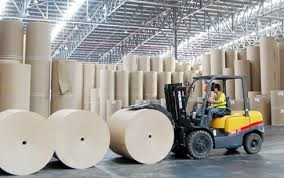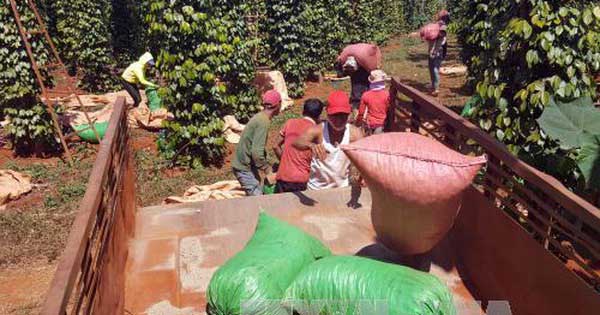Price of agricultural products dancing on the world market

Rice export prices in Asia this week continue to increase due to strong demand from key importing markets such as Bangladesh and the Philippines.
Thai 5% broken rice was at $ 450-457 per tonne, FOB Bangkok, from $ 440 to $ 457 a ton a week ago, the highest since August 2013; Vietnam’s same rice was $ 410 / ton, FOB Sai Gon, from $ 395 to $ 400 / ton a week ago and the highest since November 2014; India increased $ 7 per tonne to $ 422-425 per tonne due to rising domestic prices and strong demand from African buyers.
Thai rice prices have been on the rise since March and are continuing as exporters continue to buy rice from milling plants to complete signed contracts, with relatively high demand from Bangladesh, Iran, Iraq and the Philippines. Supply in Thailand is low and it is not until August – September to harvest additional rice.
Vietnam rice prices have risen more slowly since early May amid limited supply. Bangldesh will import 200,000 tons of white rice at $ 430 / tonne and 50,000 tons of rice at $ 470 / tonne in Vietnam under government contracts. Rice will be delivered within 60 days, during which the first delivery will be delivered within the next 15 days. So in the future, exporters will have to speed up the collection of rice.
Forecasting the trend of rising rice prices in Asia will continue. Bangladesh is also negotiating with Thailand and India to import more rice to stabilize domestic prices amidst national rice stocks that are at their lowest level in 10 years. The Philippines said it would open next month to buy 250,000 tonnes of rice from Thailand, Vietnam and possibly India.
Wheat rises sharply this week as dry weather threatens to dampen US winter wheat supplies amid Australian farmers holding wheat as prices are expected to rise further.
On June 16, Chicago wheat traded at $ 4.58-1 / 4 per bushel, the highest level in six weeks. So within a week, prices rose 2.7%, and since early June prices have increased 6.6%.
In the Asian market, wheat-based protein prices in Australia and the United States are also rising rapidly.
Australian hard wheat (APH) protein content of 13% on the Asian market is currently at $ 290 / tonne, C & F, from $ 280 / tonne two weeks ago. Black corn in the North of the United States with a 14% protein content increased to $ 292-293 / tonne, C & F, from $ 280 / tonne.
Asian wheat importers are worried that prices will rise further if the weather in the US continues to dry up, leading to lower US wheat production than previously forecast. Some places in Australia are also under water but not to serious. If the situation in Australia is similar to that in the United States, it is very worrying. Hot and dry weather in Europe in recent weeks has led Strategie Grains to lower the forecast for most EU cereals production this crop year.
Wheat imports into the Asian market have been steadily rising recently. According to the USDA, imports into Southeast Asia over the past decade have more than doubled, mainly due to increased use of flour products. Consumption in industry and animal husbandry has more than doubled due to accelerated demand from cattle, poultry and agriculture. World wheat flour export has continuously increased from 2012/13, when at 12.65 million tons.
Growing demand for wheat from Asia and Africa will lead to a rise in world wheat trade in the near future. The International Cereal Commission (IGC) forecasts global wheat trade for the 2017/18 season to reach 16.8 million tonnes, from 16.6 million tonnes in 2016/17. 2015/16 is the first time the world wheat trade exceeds 16 million tons.
Futures on the Tokyo Commodity Exchange (TOCOM) rose three consecutive sessions to over 200 yen per kg as the yen weakened and news that key rubber producers will meet on price hike on. Just a week ago, rubber prices in Tokyo at times to a seven-week low.
November contract on the TOCOM on June 16 gained 200.3 yen ($ 1.80) a kg for the first time in two weeks, breaking above 200 yen. For the whole week, prices rose sharply by 7%, also the first week rose within 4 weeks.
However, in Southeast Asia, rubber prices have fallen over the past two weeks. The International Rubber Consortium (IRCo) this week will meet in Indonesia to discuss lowering rubber prices and discuss measures to boost prices, including restrictions on production and exports. Cabinet of Thailand on June 13 adopted measures to help rubber growers and reduced the price point of the commodity, including the extension of the ten billion baht loan program ($ 295 million) For cooperatives, up to 3 years, and another 10 billion baht for rubber trading.
Recently, the International Rubber Association (ANRPC) has revised down its forecast for world natural rubber supply in 2017, bringing the price of rubber back to normal. In its latest report, ANRPC lowered its global supply forecast for natural rubber to 12.756 million tons in 2017, down slightly from 12.761 million tons forecasted a month ago. Total rubber supply declined in the first quarter, which is expected to continue to decline in the second quarter, and will likely fall further if prices remain low. However, supply is expected to increase rapidly in Cambodia (35.5%) and India (20.2%) due to the increase in latex harvesting area. ANRPC forecasts that Indian natural rubber production in 2017 will reach 750,000 tonnes.
Robusta coffee prices rose to a two-month high on June 16 as traders focused their attention on tight supplies in Asia and copper futures for November delivery rose for the sixth straight session.
Session 16/6, September delivery price reached $ 2,110 per tonne, the highest since April 21. The September contract rose more than $ 27 to $ 27, the highest level for this contract and up from just $ 1 on June 7.
From May 24 until now, prices have increased nearly 12%, from $ 1,877 per ton. There are signs of a tight supply before a new harvest in Vietnam, the world’s largest producer of robusta. Coffee growers in Vietnam tend to keep their goods from being sold, while in Indonesia coffee transactions have been stagnant for Ramadan.
Vietnamese coffee exporters are experiencing a decline in the supply of robusta after selling nearly all of this coffee. Reuters said exporters were struggling to find coffee to finalize the deal, as coffee growers sold most of the harvest at the start of the season as global prices peaked at more than 5 years.
It is forecasted that the supply of world sugar will be surplus to push down the world sugar price continuously. On June 15, raw sugar prices fell to a 16-month low, at 13.36 US cents / lb, down 7% in the past week alone.
In recent days, the price of sugar has fallen on the news that Brazilian state-run Petroleo Brasileiro has lowered the average price of gasoline and diesel, causing ethanol producers to cut ethanol production and Increase sugarcane percentage in sugar production. In addition, Brazil’s Mid-South Brazil, the world’s largest sugar producer, produced 1.75 million tonnes of sugar in the second half of May, much higher than expected, though not as much as in the same period. This point of previous years.
Tropical Research Services raised its forecast for surplus sugar in the 2017/18 season to 3.57 million tons (rough crude), from 1.90 million tons forecast a month ago. Earlier in the day, the Sucres and Denrees (Sucden), a commodities trading company, forecasts that the world sugar market will surpass 3.5 million tonnes due to increased production in the European Union, India, Thailand and China.
Pepper prices in the Central Highlands provinces have dropped to a seven-year low of VND80,000-82,000 / kg, which is down to VND72,000-74,000 / kg, nearly half the 143,000 VND / kg in 2014. Although the downtrend has shown signs of slowing down in the last few days, pepper prices have fallen sharply, causing many farmers to grow pepper in the Central Highlands.
According to the Steering Committee of the Central Highlands, the price of pepper has continuously increased for many years, sometimes increased to 230,000 VND / kg and profit is three times higher than that of coffee, cashew …. Farmers in the Central Highlands, regardless of local recommendations, functional sectors … massively expand the area of pepper is not planned, plans to make the surplus supply contributes to the price of pepper.
(According to CafeF)




